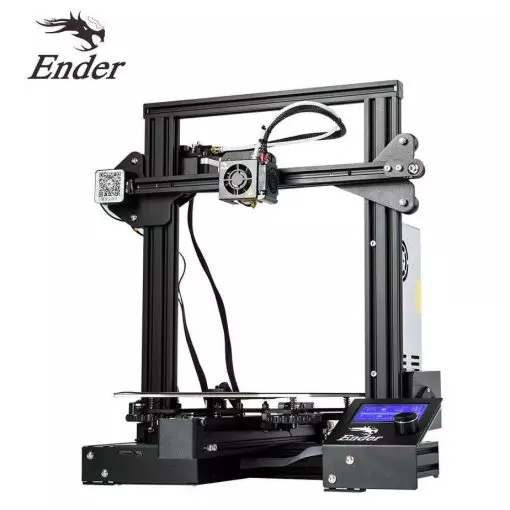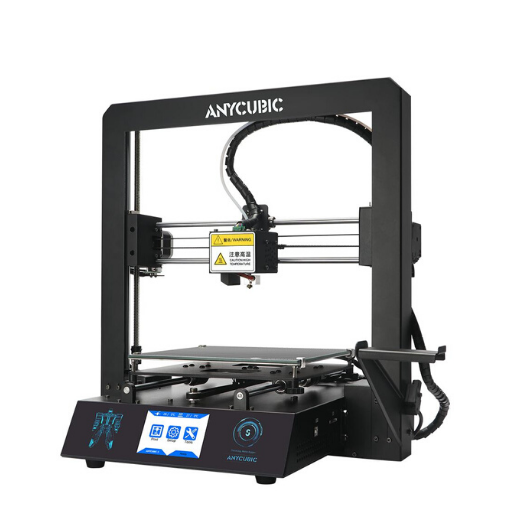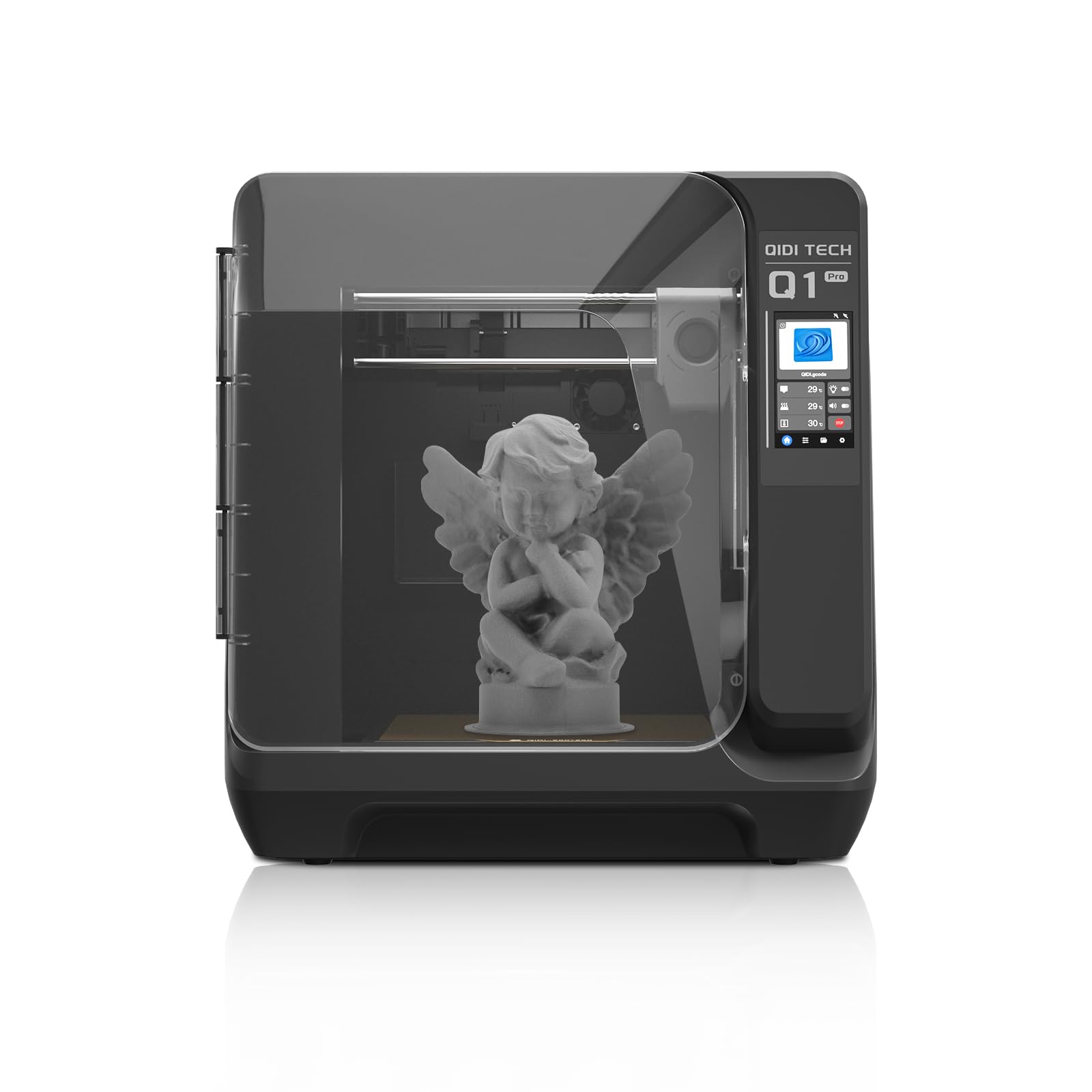Compare Ender 3 vs Mega S vs Q1 PRO
Comparison between the best 3D printers
Choose the best 3D printer at the best price. The cheapest 3D printers are here.
Buy a 3D printer here with 3D Fila.
 |
 |
 |
|
| Model | Ender 3[BUY Ender 3] |
Mega S |
Q1 PRO[BUY Q1 PRO] |
| Printing Material | Filament | Filament | Filament |
| Estimated price | $210,00 | $149,00 | $449,00 |
| Fabricante | Creality 3D | Anycubic | QIDI |
| Release Year | 2018 | 2019 | 2024 |
| Print Volume [mm] | 220x220x250 | 210x210x205 | 245x245x245 |
| Printer Size [mm] | 440x440x465 | 405x410x452 | 467x477x489 |
| Weight [kg] | 6,62 | 14,5 | 20 |
| Power Loss Recovery | NO | YES | YES |
| Enclosed printer | NO | NO | NO |
| Bed Leveling | Manual | Manual | Automatic |
| Filament End Sensor | NO | YES | YES |
| Bed type | Heated | Heated | Heated |
| Power supply system | Bowden | Bowden | Direct Drive |
| Standard nozzle | 0,4 | 0,4 | 0,4 |
| Maximum Nozzle Temperature [°C] | 255 | 260 | 350 |
| Maximum Bed Temperature [°C] | 110 | 110 | 120 |
| Maximum printing speed [mm/s] | 180 | 100 | 600 |
| Filament holder | YES | YES | YES |
| Camera for supervision | NO | NO | YES |
| Recommended filaments | PLA, TPU, ABS, PETG | PLA, TPU, ABS, PETG | PLA、ABS、ASA、PETG、TPU、PC、PA、PA-CF、PET-CF、PAHT-CF etc. |
| Recommended slicers | Cura, Simplify, Slic3r | Cura, Simplify, Slic3r | QIDI Slicer/Cura/Simplify 3D/ORCA/PRUSA Slicer |
| Maximum Resolution [mm] | 0,1 | 0,1 | 0,1 |
| Processor | 8 bits | 8 bits | Cortex-A53,64-bit Processor |
| Display | Mono | Touchscreen TFT 2,8'' | Touchscreen 4,3'' |
| Power Supply | 24V / 270W | 12V / 300W | 350 W |
| Connectivity | SD / USB | SD / USB | WiFi/USB Flash Drive/Ethernet Cable |
| Operating systems | Windows, Mac, Linux | Windows, Mac, Linux | Windows, Linux, Macbook |
| Date of registration in the system | 2021-04-13 | 2021-04-15 | 2024-07-09 |
| Release date | 2018 | 2019 | 2024 |
| Extra features | The Ender 3 V1 is a DIY assembly 3D printer, a sales leader since 2017, standing out for its cost-benefit. With a wide printing capacity, it has a CNC machined structure for precision and stability. It offers high-precision prints with low noise, thanks to its innovative V-profile and pulleys. It has a self-adhesive magnetic platform for easy removal of models and excellent adhesion. The Ender 3 heats up quickly, reaching 100°C in 5 minutes, ideal for agile prints. It includes protection against power failures, allowing you to resume printing after interruptions, saving time and material. | The Anycubic Mega S offers a printing platform with excellent adhesion, easy removal after cooling. It has a filament sensor for a better experience with flexible materials and a multilingual and intuitive color touchscreen. Assembly is quick, requiring only 8 screws and 3 connections. It has a large build volume (210 x 210 x 205 mm), high positioning accuracy and supports a variety of materials, including TPU, PLA, ABS and wood. It stands out for its solid metal structure, superior stability, high-quality printing with layer resolution of up to 50 microns, Ultrabase for easy adhesion and removal of parts, resumption of printing after power outage, high-quality extruder for flexible filaments, suspended filament support and stable structure that reduces shaking, improving printing quality. | The QIDI Q1 Pro 3D printer stands out for its Core XY structure and heating chambers that reach up to 60ºC, ideal for advanced materials such as ABS and Nylon. It features Klipper firmware, an automatic leveling system, a high-flow extruder with a double metal nozzle and a hotend that reaches 350ºC. It offers connectivity via Wi-Fi, USB and Ethernet, as well as a 1080p camera for remote monitoring and an intuitive touchscreen for easy operation. |
| Support for multiple colors and materials (AMS and CFS) | NO | NO | NO |
Notes * |
|||
| Cost-benefit | 6 / 10 | 7 / 10 | 8 / 10 |
| Hardware | 0.5 / 10 | 2 / 10 | 5.4 / 10 |
| Screen | . | . | . |
| Print volume | 3 / 10 | 3 / 10 | 3 / 10 |
| Performance | 1 / 10 | 1 / 10 | 5 / 10 |
| [BUY Ender 3] | [BUY Q1 PRO] |
Conclusion |
| In comparing the Ender 3, Anycubic Mega S, and QIDI Q1 Pro, it's evident that each printer caters to different needs and budgets. The Ender 3, a well-known entry-level option, offers a solid balance of features at a competitive price. Its DIY assembly allows for customization, although it requires manual bed leveling, which can be a drawback for some users. The lack of advanced features such as power loss recovery limits its appeal for more serious projects. On the other hand, the Anycubic Mega S, although it comes at a lower price point, provides notable advantages like a filament sensor and a touchscreen interface, enhancing usability. It delivers good print quality and stability, making it a great choice for beginners. However, its slightly reduced print volume compared to the Ender 3 may limit larger projects. The QIDI Q1 Pro, while positioned at a higher price, brings advanced capabilities to the table, including automatic bed leveling and support for a wider range of filament materials. Its high-resolution touch screen and built-in camera for remote monitoring set it apart in terms of modern conveniences. It targets users who are more serious about 3D printing and want features that simplify and enhance their printing experience. In conclusion, if you're looking for an affordable and reliable printer that performs well for small to medium projects, the Ender 3 is a great choice. The Anycubic Mega S serves as a suitable and lower-cost alternative with slightly better usability. For those willing to invest more for advanced features and capabilities, the QIDI Q1 Pro stands out as a high-performance option with significant versatility. Ultimately, the best choice depends on your specific needs, budget, and level of expertise in 3D printing. |

